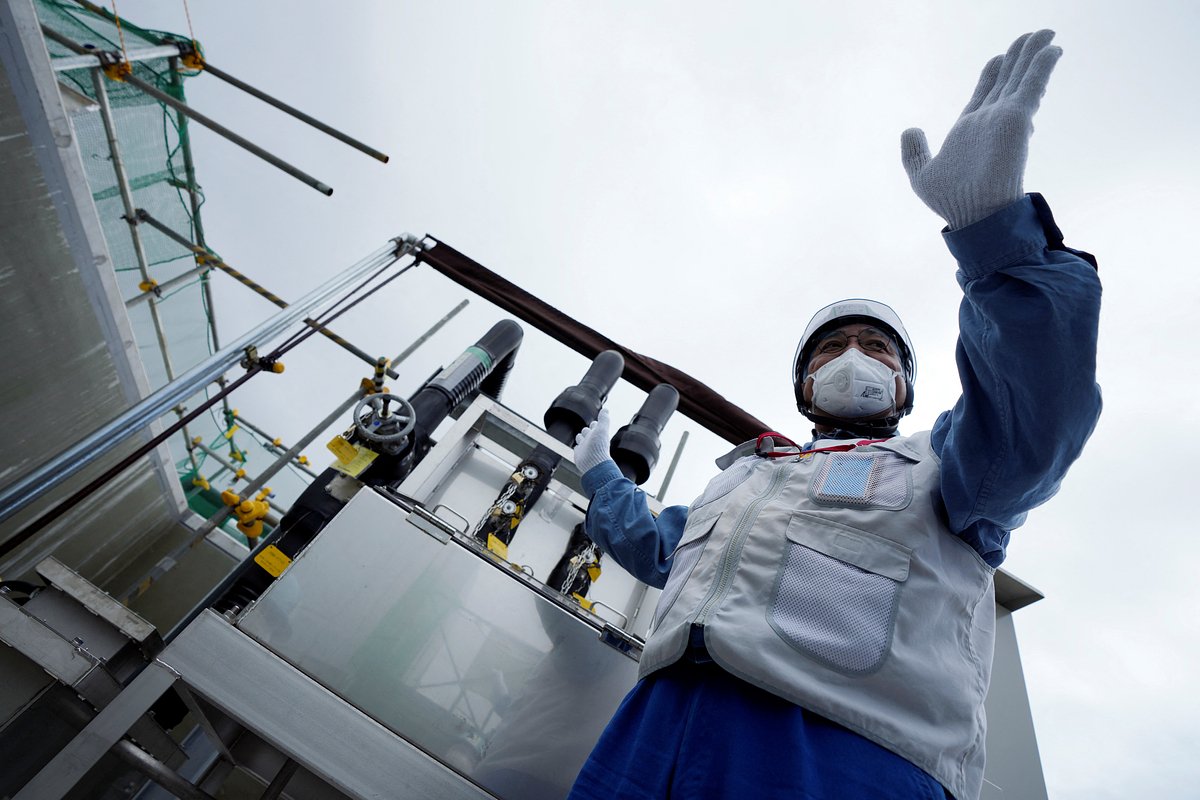A leak of radioactive water was discovered at the Japanese Fukushima-1 nuclear power plant
At the emergency Fukushima-1 nuclear power plant (NPP) in Japan, radioactive water leaked from cleaning equipment. The incident was reported by plant operator Tokyo Electric Power Company (TEPCO) on Wednesday, February 7.
The leak was discovered by one of the station employees during a technical inspection. 10 of the 16 valves that should be closed were open. According to the operator's calculations, the volume of leaked water was 5.5 tons. This liquid contains radionuclides, including radioactive cesium and strontium. The concentration of radioactive substances in the water amounted to 22 billion becquerels, despite the fact that the maximum permissible norm is 1.5 thousand becquerels.
Radioactive water soaked into the soil
The radionuclides in question are hazardous to health. Cesium influences on all organs and tissues of the body, as well as on the human genetic apparatus, and can lead to the development of cancer cells. Strontium, in turn, is able to be deposited in bones. Long-term radiation exposure to this element and its decay products affects bone tissue and bone marrow, which can lead to the development of chronic radiation sickness and provoke the appearance of tumors.
Photo: Eugene Hoshiko/Reuters
Despite the danger of elements that got outside the nuclear power plant along with water, TERCO doesn't count leakage is dangerous. The company stated that the emergency occurred in an area where no one lives and did not in any way affect the situation outside the station. Representatives of the operator believe that a significant part of the leaked liquid could have been absorbed into the soil. Later, work is planned to remove the land affected by the radioactive liquid to prevent the spread of contamination.
22
billion Bq
Is the concentration of radioactive substances in leaked water
According to the Asahi newspaper, radioactive water has not yet been recorded in the ocean.
The impact of Fukushima-1 on the environment has already raised doubts
Japan began releasing water from Fukushima 1 into the Pacific Ocean in August 2023. Before leaving the station, the liquid used to cool the damaged reactors was purified from 62 types of radionuclides. Japanese authorities have assured that the water will be diluted until the content of harmful substances in it reaches normal levels. If the radiation background nevertheless exceeds the norm, the discharge will be stopped.
Japan's decision to release water from nuclear power plants has been criticized and questioned from the very beginning. Due to lack of confidence in the safety of the procedure, China entered ban on the import of all seafood from Japan.
In September, fears of China and other countries intensified when tritium, a heavy isotope of hydrogen that intensively penetrates into the environment and water, was discovered in the sea on the northeastern border of the port adjacent to Fukushima-1. The concentration of the element reached 10 becquerels per liter. This indicator is the lower limit of the level of detection and does not pose a danger to living organisms, however, it indicates alarming dynamics, since before the discharge the tritium content in the water was lower.

Photo: Eugene Hoshiko/Reuters
At the end of September Rospotrebnadzor stated, that he did not find traces of tritium in the water after the release of water from Fukushima-1, but there is a risk of accumulation of hazardous substances over time. “Accumulations in both bottom sediments and hydrobionts cannot but occur, because the quantity and volume will increase,” explained the head of the department, Anna Popova.
In 2024 Japan plans discharge about 54.6 tons of treated water from Fukushima-1. In addition, TEPCO will consider the possibility of eliminating fragments of melted nuclear fuel from the station.
#leak #radioactive #water #Fukushima1 #nuclear #power #plant #dangerous